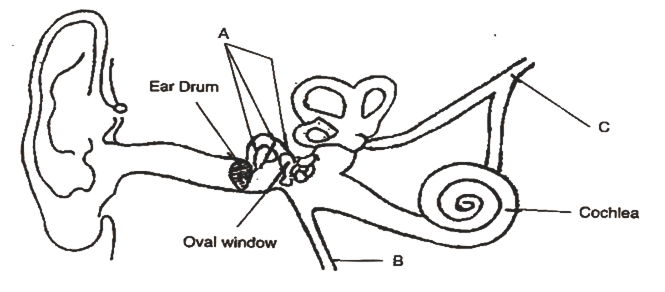Given below is the diagram of the human ear. Study the same and answer the questions which follow:
(i) Give the biological term for the part labelled ‘A’ and state its function.
(ii) Name the part labelled ‘B’ and state its function.
(iii)Name the part labelled ‘C’ and state its function.
(iv)Give the function of ear wax.(i) Ear ossicles (malleus, incus and stapes): Ear ossicles receive vibrations from the ear drum and magnify them. The vibrations of the stapes are transmitted to the membrane of the oval window.
(ii) Eustachian tube: The Eustachian tube equalises the air pressure on either side of the ear drum allowing it to vibrate freely.
(iii)Auditory nerve: The auditory nerve transmits nerve impulses from the cochlea in case of sound and from the semicircular canals in case of balancing to the brain.
(iv)Function of ear wax:
1) Ear wax has insect repellent properties and hence prevents the entry of insects into the auditory canal. It also prevents the entry of dust particles.
2) It lubricates and protects the ear.



